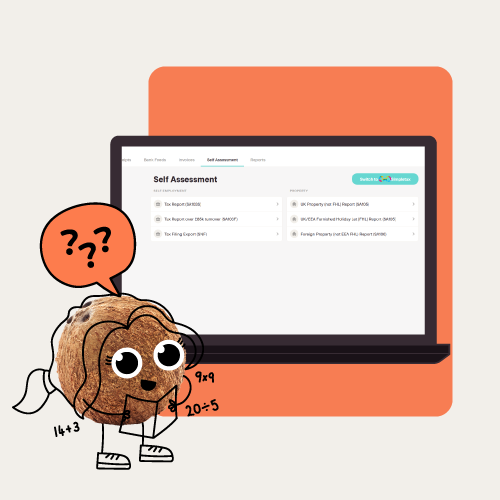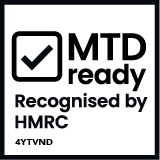Many subcontractors have probably never heard of Making Tax Digital for Income Tax. Awareness isn’t as high as HMRC would like, which is why it plans to write to taxpayers to tell them before they’re affected by the major changes it will bring.
Making Tax Digital (MTD) is the government’s ambitious project to digitise the UK tax system, basically, so that everything is done online. It was introduced for VAT in 2019 and Income Tax is next, which will impact a huge number of construction subcontractors in the next few years.
If you’re one of them you need to know a few MTD for Income Tax basics, when you’ll be affected and how. Currently, you report your income and any deductions by filing a yearly Self-Assessment tax return, but that’s set to change.
What will change under MTD for Income Tax?
When the total taxable income you earn means you need to comply with MTD for Income Tax rules, instead of filing an annual Self-Assessment tax return, you’ll need to:
- Keep accurate, regularly updated digital records of your income and expenses (most people will use MTD-compatible accounting software).
- Send quarterly updates of your total income and expenses digitally (i.e. online) to HMRC (choose the right accounting software and this will be simple enough).
- Finalise your income and expenses after the fourth quarter, claim your tax reliefs/allowances and confirm the accuracy of your figures.
When is MTD for Income Tax being introduced?
- MTD for Income Tax is being introduced in phases.
- The first phase will start on 6 April 2026 and it will affect sole traders and landlords with a gross annual trading/rental income of more than £50,000.
- Gross means income before any tax expenses are deducted.
- Then from 6 April 2027, sole traders and landlords with a gross annual trading/rental income over £30,000 will be impacted.
- From 6 April 2028, sole traders or landlords with a gross annual trading/rental income above £20,000 must comply with the new MTD rules.
- No announcement has been made yet about those earning gross annual trading/rental income below £20,000, but they too are likely to be affected by MTD for Income Tax changes soon enough.
CIS isn’t going to change. Contractors will continue to deduct tax from subcontractors’ wages. But how subcontractors report income and tax expenses to HMRC is going to change significantly thanks to Making Tax Digital.
MTD pros and cons
Pros
- Fewer surprises – at any time the software will tell you roughly how much tax you owe, so you can budget to pay your tax bill.
- Better expense management and record keeping – you’re less likely to forget about expenses and pay too much tax as a result.
- More control over your cash flow – by knowing your income, profit and tax position after every quarter.
Cons
- More regular tax admin – quarterly updates plus end of year confirmation, rather than just one annual tax return.
- Having to learn how to use accounting software – although this may be much easier than you expect.
- Software costs – MTD accounting software isn’t free, although it should cost less than a tenner a month, which can be claimed as a tax expense.
Key MTD monthly/quarterly tasks for subcontractors
1. Maintain accurate digital records
No more paper. You’ll need to record all your income, deductions and expenses digitally. You’ll also need to update your records fully before the end of the quarter, although doing it more regularly is recommended.
2. Stay on top of your CIS records
You’ll need to make sure that contractors give you clear CIS statements each month and check that the income and deductions figures are correct. These will need to be entered into your records and reported to HMRC via your quarterly update.
3. Send quarterly MTD updates
Instead of one Self-Assessment tax return a year, you’ll send updates every three months, reporting your income and expenses to HMRC for that tax year to date.
4. Finalise your figures for the year
After the fourth quarter, tax adjustments can be made. You’ll also need to confirm to HMRC that you haven’t left out any figures and that they are all accurate.
Start to get ready now!
If you currently use an accountant or bookkeeper, they should make sure that you have the necessary software (or just do it all for you). If you normally do your own Self-Assessment tax returns, you’ll need to make sure that you have the necessary software (i.e. accounting software that can report summary figures to HMRC digitally as required).
Getting the right software and getting used to using it as soon as possible is essential to making the transition to MTD as painless as possible. HMRC will only accept quarterly updates via approved software (or bridging software that can report figures from spreadsheets). MTD for Income Tax is coming, the first phase is in April 2026. Don’t leave it too late!
Coconut is your ready-made MTD solution. It’s HMRC approved for MTD for Income Tax and created for sole trader subcontractors like you. It costs less than £10 a month, or £99 a year! Coconut will make MTD compliance quick and painless, giving you peace of mind to free you up so you can do what you do best.
Start your free 30-day trial today and find out why so many other sole traders love Coconut.











